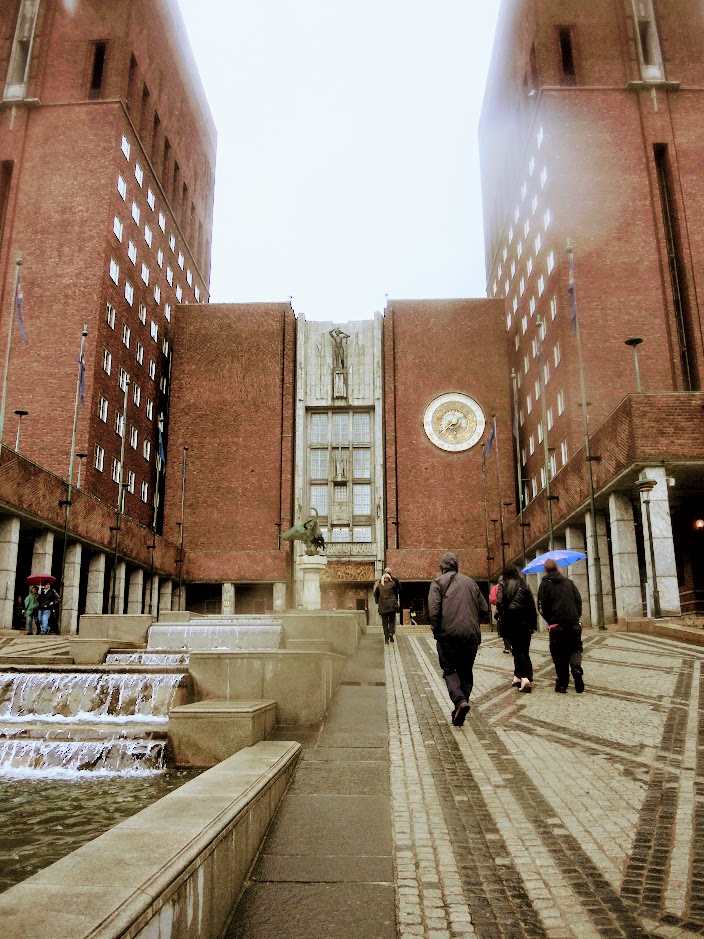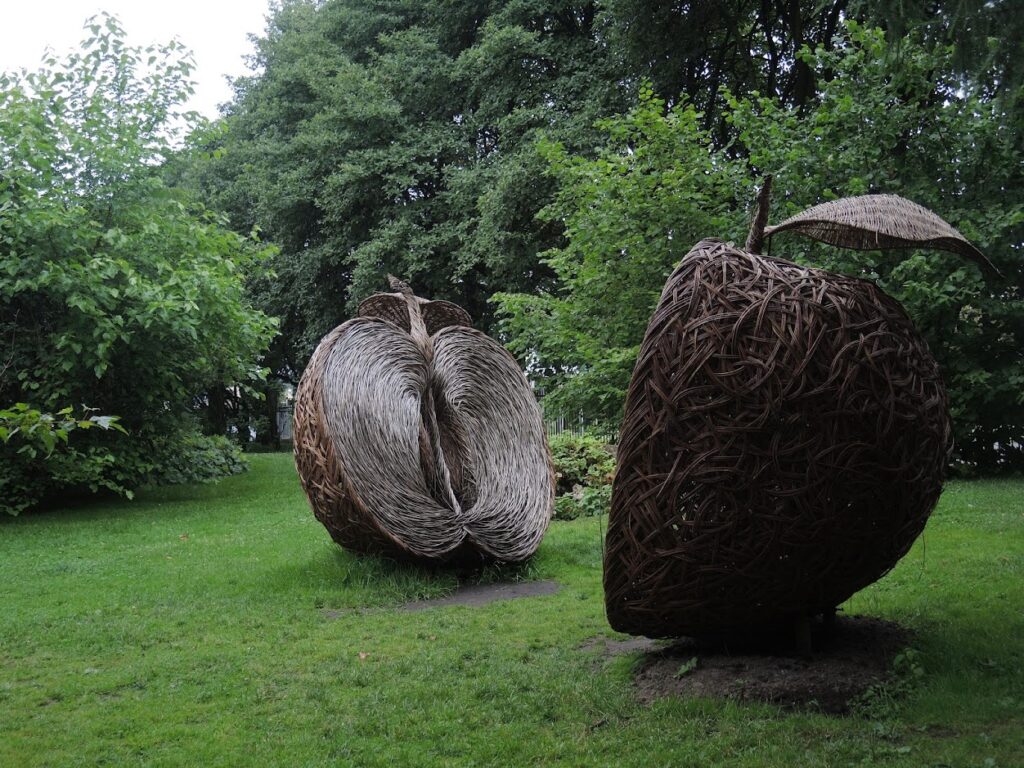In 2015 I took an extended trip to Scotland and Scandinavia with a brief stop in Helsinki tacked on to the end of the trip’s schedule. Because I visited them all on a single trip and because of their geographic proximity I’ve decided to deviate slightly from the pattern I’ve followed thus far in writing about Olympic cities and me. (I know that technically I visited Beijing and Moscow on a single trip but these two host cities are divided by a continent and more or less bookended a nearly month long journey.) You should prepare to read about the Norse countries for awhile beginning with my personal recollections from each city. I’ll start the Olympics recaps after I’ve taken you to each of the cities. In each of the supplemental chapters I’ll treat this northwestern corner of Europe as a single unit. Further, I’m going to post a combined entry for Oslo and Lillehammer a pair of Norwegian cities separated by only 160 kilometers.
Finally, before I begin, I will remind you that while all of these countries are Nordic, only Norway and Sweden are Scandinavian hence the chapter title. Denmark is the third Scandinavian country but it has yet to host the Olympic Games.
Oslo down.
My trip to Scandinavia began with a few days in Denmark followed by an overnight ferry from Copenhagen to Oslo and time spent in the capital city – once called Christiana – would bookend my stay in Norway.
Soon after we arrived, we made a brief stop at the Holmenkollen Ski Jump.
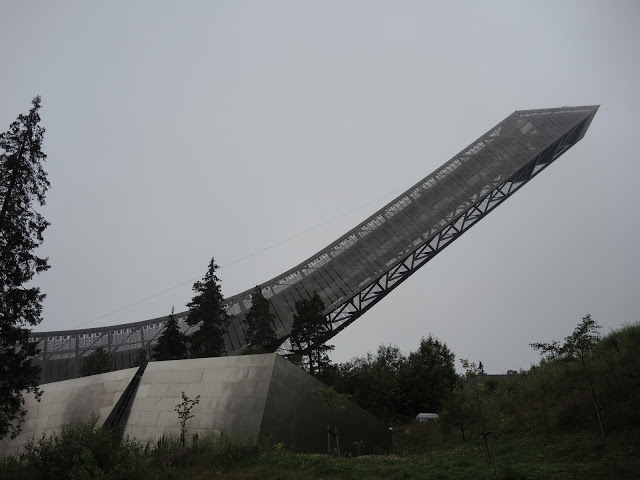
This might seem an odd place to begin a tour but, let’s face it, it’s a rare city that features a ski jump just seven kilometers from the Royal Palace in the city center not to mention that it’s the only hill in the world with a permanent wind screen built as part of the designed construction. Also, it’s the only steel jump in the world.
It was a rainy morning but the tour had another outdoor stop planned. From Holmenkollen we were off to Frogner Park often called Vigeland Park because in a large section of the park Gustav Vigeland designed, sculpted or cast not only the statues but the bridges, fountains, and gardens. This installation is the largest of its kind by a single artist and it has understandably gained worldwide fame.
However, there is a darker side to Vigeland. He was a Nazi sympathizer and, under the collaborationist, Vidkun Quisling, readily and regularly invited prominent Nazis to his studio. Most of his works, including the 212 bronze and granite sculptures in the Vigeland installation were generally considered representative of Nazi or Fascist aesthetics.
I felt a bit better about myself after our visit to Oslo’s City Hall.
The cleansing came not as a result of the building’s aesthetic but rather because it’s the site where the Nobel Peace Prize is awarded. Curiously, although all other Nobel Prizes are presented at a ceremony in Stockholm, the city of Nobel’s birth, this lone lost lamb of the Peace Prize has its ceremony in Oslo as Nobel himself insisted. No one definitively knows the reason. We finished this tour at 14:00 or so and were now free to spend the remainder of the day as we wished.
I like wandering through cities and did just that with the ultimate goal of reaching the Munch Museum. After losing my way more than once, I managed to eventually find my way there and afterward to the nearby Botanical Gardens. (Some years after my visit to Oslo, the city constructed and opened a new Munch Museum about two kilometers from its location when I visited there.) The exhibition at the Munch Museum had the title Munch / Van Gogh that presented two artists who never met but whose evolution as artists was remarkably similar.
From the museum, I crossed the street to the Botanical Gardens where the five willow sculptures by British artist Tom Hare highlighted that portion of the day.
You can see all my photos from the day here.
After a visit to the Viking Ship Museum, we left Oslo the following morning and began a circuit around the southern part of Norway
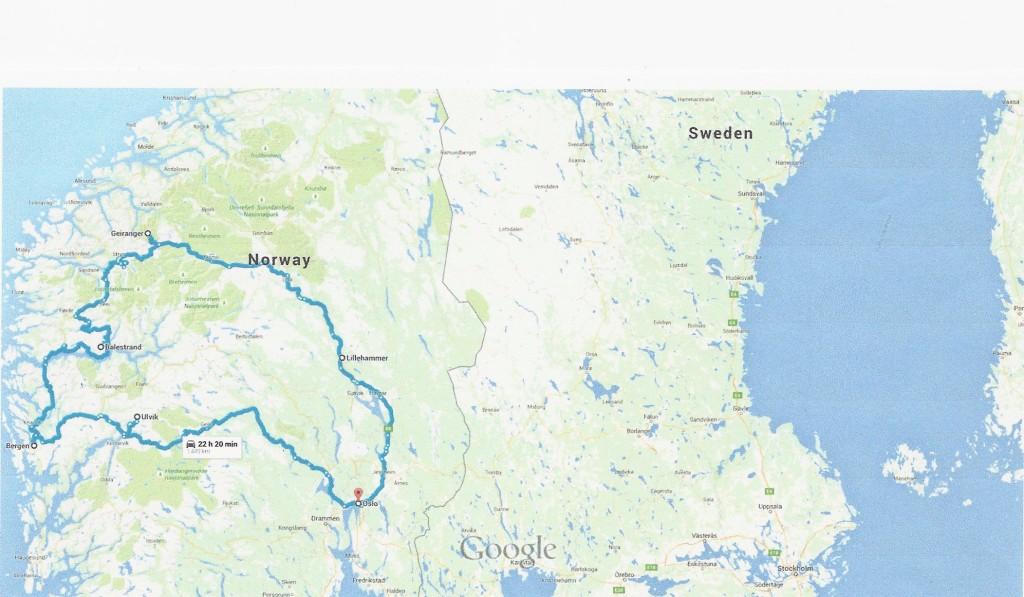
that would, in fact, take us to Lillehammer before returning to Oslo. However, I’m going to place urban continuity ahead of sequential continuity and wrap up this summary of my time in Oslo with one more brief highlight before stopping at Lillehammer.
People who have followed my travels through these posts know that I like to frequent large municipal cemeteries. Even in this series I’ve touched upon my visit in Moscow to Novodevichy Cemetery with Erin. Thus, it should come as no surprise to learn that on our return to Oslo I spent some of my free time taking a long walk from our hotel to Vår Frelsers gravlund the cemetery where Henrik Ibsen and Edvard Munch are interred. Both have relatively modest graves.
A l’il bit about Lillehammer.
Perched at a latitude slightly north of 61°, the small lakeside town (current population about 27,000) of Lillehammer holds two distinctions in modern Olympic history. First, it’s the northernmost city to host any Olympic Games – Summer or Winter. It’s also the first (and so far only) city to host the Games of the same season two years after the previous Olympiad.

The XVII Winter Olympiad began on 12 February 1994. By that time, the 1984 host city of Sarajevo had been under siege by Serbian forces for more than 650 days. The Norwegians adopted a theme of “Remember Sarajevo” that permeated the Lillehammer Games from the opening through to the closing ceremonies and I’ll discuss this in a bit more detail when I recap those Games.
Long before hosting the Olympics, Lillehammer played a significant role in World War II when it served for a brief time late in the war as the headquarters of the Nazi occupation in Norway. Although the Norwegian government maintained an official stance of pacifism and neutrality, and the Storting (Norwegian Parliament) refused to surrender, the country effectively capitulated to the invading Germans mere days after they had entered the country in April 1940. History shows that Norway displayed both strong elements of Nazi cooperation and resistance to the occupation.
In late 1944 or early 1945, the Nazis relocated their headquarters to Lillehammer from Oslo. In fact, the Radisson Blu hotel where our group ate lunch was the building that housed those headquarters.
The Olympic Park and the cauldron that held the Olympic Flame
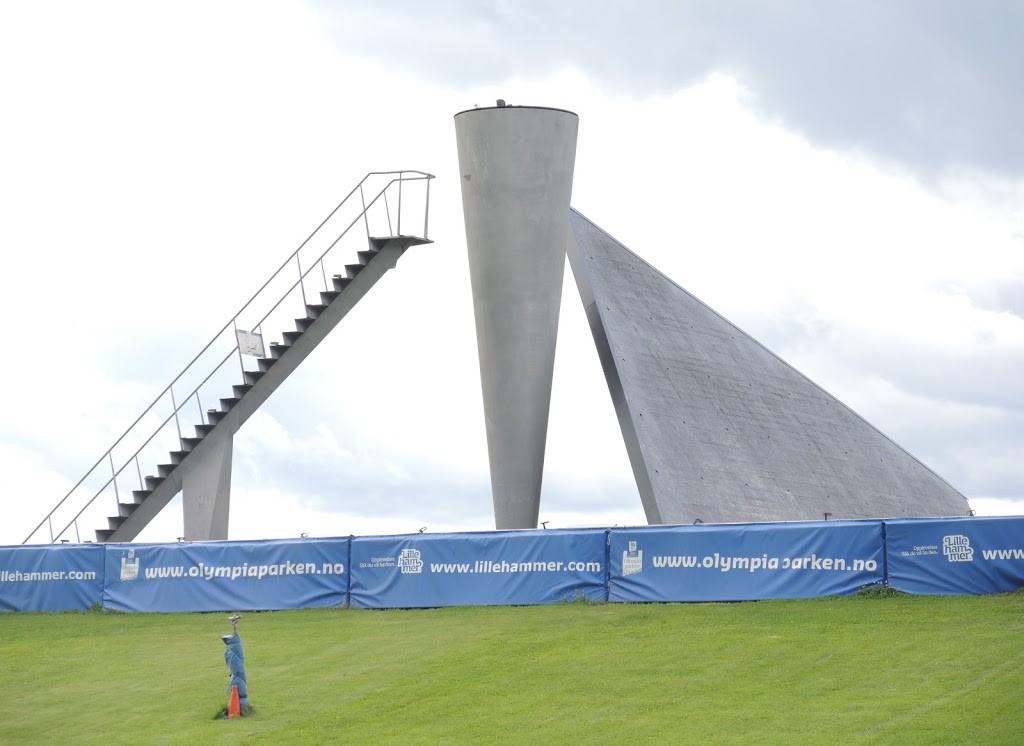
still have a prominent spot in the village as does the Norwegian Olympic Museum some two kilometers distant. Next, it’s on to Stockholm.
